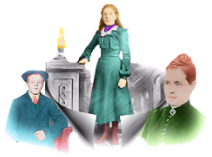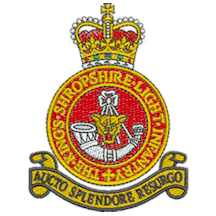


Regimental Journal and History part 2
Korea 1951
Phase 1 : I5th May, 1951 to 27th May, 1951.
Daily armoured patrols forward to a depth of 6 to 8 miles
The first one was carried out by "A" and "D" Coys [company]., supported by American tanks and our own N.Z. artillery, and resulted in no contact, though a few Chinese were seen beyond the limits of our objectives and promptly shelled. The next three days saw "C" Company, commanded by Major R. Evans, M.C., accompanying on American 1/2-tracks, a squadron of American Patton tanks in various probing thrusts. Chinese up to company strength were seen, engaged, and pin-pointed, fortunately without loss to "C" Coy., though several American tanks were blown up on mines and in one case attacked by fanatical Chinese, who carried explosive charges and placed and held them against the front of a tank and waited for the explosion.
On May 19th, 8th Army started a general offensive, with 28 Bde [brigade] attacking alongside an R.C.T. of 24th Div. 3rd R.A.R. right forward, 1st K.S.L.I, left forward opened the Brigade battle and, after a short march, 1st K.S.I..1. attacked their first two objectives, each about 1000 feet high, with "A" and "D" forward Coys., "C" Coy. left flank protection, with tanks and "B" Company in reserve. Company Commanders for this battle and up to end of June, except for Major Evans, who was unfortunately badly wounded on June 1st, and relieved by Capt. Gahan, were : "A", Major K. Heard, M.C., "B," Capt. Garnett, "C," Major Evans, "D," Major Cottle, "S" and O.C. "A" Echelon, Major Phillips, "H.Q." Capt. Roberts. After a long ascent, both Companies gained their objectives against moderate enemy resistance, amounting to a platoon plus in each case"
The third objective, 400 feet higher up, was taken by "A" Company, who scrambled to the top and dislodged another platoon of enemy. An enemy counter attack up a blind slope was luckily stopped by the R.A.R. on our right and then "B" Coy finished the day's battle by winkling out a few recalcitrant snipers amongst the rocks and fox holes. Considering we had only just arrived in the country and this or any other type of warfare was new to almost the whole Bn. except senior officers, W.O's and N.C.O's, the Companies fought magnificently on to what the CO. described very adequately as "what might well have been a full Divisional objective."
The next day was peaceful, with K.O.S.B. and P.P.C.L.I, battling for possession of hills to the north of the main east-west trunk road, which was relatively strongly held, and the road itself heavily mined with Russian A.T. mines.
Amidst pouring rain the Bn. pushed on over the hills to fill a gap north of the main road between 1st K.O.S.B. and 3rd R.A.R. This was accomplished without contact, but for various reasons we were out of touch by air or ground with Bde. H.Q., and the mortar and M.G. platoons, and all F. & A. Echelon transport and supplies for 24 hours. However, the road was soon cleared of mines, the rain stopped, W/S and line worked once more and, after a night's rest, the Bn. was ready to push on in the centre of the Bde. front. The hills became higher and the pace faster now that it was learned that the 8th Army offensive along the entire front had smashed the Rcd counter offensive. The Communist Army were alleged to be in full retreat, difficult to believe, hut subsequently proved to be true. Tac. H.Q., with "B" and "C" Companies clambered unopposed up Hill 8I4 (2,442 ft., and then on to 072, where they stayed the night. Mean-while, main H.Q., with "A" and "D" Companies, mortars and two sections M.C. 's, were ordered forward that afternoon on foot, a distance by road of ten to twelve miles, to attack and secure before nightfall two features forward of 672, to link up with the Australians on the right. Lack of appreciation of time and road space on the higher levels made it impossible for the complete task to be carried out that night, and the Brigadier ordered the objectives to be seized the next day. This was completed without opposition (except' for three defeated and unarmed Chinese, who were captured with great display by the Mortar Officer) by 1500 hours. Tac. H.Q., "B" and "C" then joined up forward and the great May offensive was finished as far as 28 Bde. was concerned.
On looking back at their hectic eight days, when all ranks averaged not more than 2 or 3 hours rest per 24, one may recollect that the Bn. was perhaps lucky to receive its Korean baptism of fire against such comparatively light opposition and with such light casualties. Walks over the ground, both during and after the battle, revealed an immense system of inter-locking defences, to a depth of several miles, all based on Japanese tactics, i.e., thousands of self-supporting one and two-man foxholes, well sited and concealed, mined roads and tracks, but no wire and little evidence of supporting weapons, other than rifles and up to 4.2 mortars. Villagers left behind spoke of large numbers of enemy who had gone away only a few hours before our attack came in. This was confirmed by the vast quantities of small arms, pack saddlery and personal clothing, etc., left behind in the flight of the Chinese. Indeed, had the enemy not retired in the face of the U.N. colossal weight of fire power and air support, the infantry would have suffered very heavily in winkling out the masses of enemy everywhere.
LT. COL. A. S. SHAW-BALL, D.S.O.
LT.-Col.. Shaw-Bali, (Snowy) left the Bn. on June 1st, on relinquishment of his tenure of command. His departure will be much felt by all ranks of the Battalion, who had come to regard him as one of the really great commanding officers. A regimental soldier first and foremost has always been one of his strongest characteristics, and with this in mind he has led the Bn. up to the highest standard of efficiency.
© KSLI Journal May 1951
The excerpt above is courtesy of the Shropshire Regimental Museum for which I am truly grateful.
© Shropshire Regimental Museum 1950

| About us |
| Contact us |
| our policy |
| Viewing Notes |
| Acknowledgements |
| Yapp family |
| james Yapps Cockney history |
| William and Eliza |
| Hannah and Mathew |
| James William Yapp |
| Mathew and Alice |
| Aussie connection |
| Family not forgotten |
| Origination 1 |
| Origination 2 |
| Origination 3 |
| KSLI 1951 |
| KSLI journal |
| Journal pt.1 |
| Journal pt.2 |
| Bill Griffiths |
| LCpl Hanlon |
| Bob_West |
| KSLI Roll of Honour |
| News Clips |
| Military Career |
| George Yapp KIA Korea |
| George service pictures |
| Communications |
| Georges Letters 1 |
| Georges letters 2 |
| Last letters home |
| Georges Awards |
| UN Memorial Cemetery Korea |
| Georges Story |
| Exchange rates |
| World Time |
| Speed Tester |